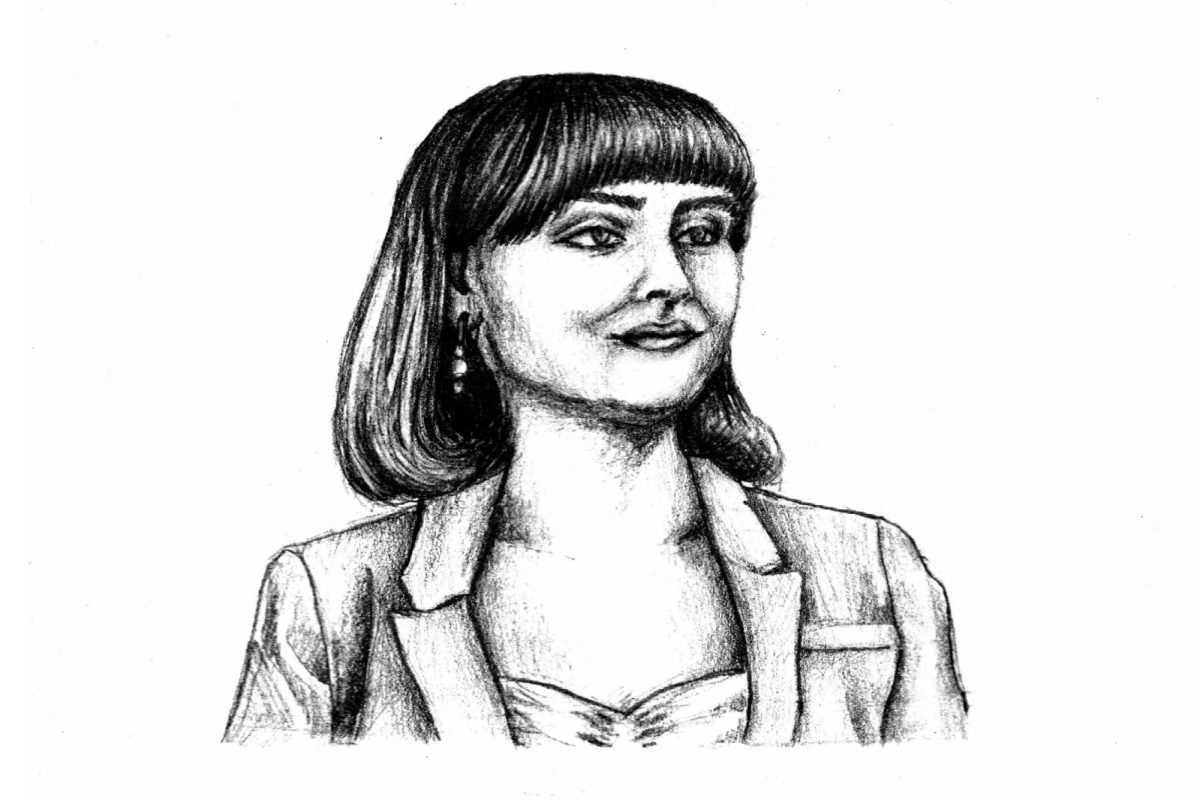H Street is the backdrop for many #OnlyAtGW moments on our campus. For some students — including members of the editorial board — that includes getting hit, or nearly hit, by a car.
Student Association candidates, local officials and student researchers have looked at ways to turn H Street between 21st and 22nd streets into a shared space for motor vehicles and people. While these renovations — assuming the University and the city agree to them — may take several years to implement, it’s worth imagining what H Street might look like in the future. Renovating H Street with pedestrians in mind could make it safer and create a new community space on campus.
This isn’t the first time the University community has considered the safety of H Street — with the city’s approval, GW installed a crosswalk between Kogan Plaza and District House in fall 2018. But that hasn’t assuaged safety concerns at this hotspot for vehicle collisions on campus. District data shows drivers have struck at least six people on the 2100 Block of H Street since 2010. Two of those collisions occurred after officials installed the crosswalk in 2018, one in April 2019 and one in November 2019.
The flow of people crossing H Street, particularly at the two mid-block crossings outside District House and the University Student Center, doesn’t mix with motorized vehicle traffic. Other than the crosswalks, there’s no signal that drivers need to slow down as they travel the block — and without speed bumps or traffic lights, nothing’s forcing them to tap the brakes. So it’s pedal to the metal for drivers on long, straight, flat H Street. In 2020, The Hatchet reported more than 90 traffic collisions had occurred on the four blocks of H Street running through campus in the last decade, according to city data.
The solution isn’t just making H Street crossable — it’s changing how people, both pedestrians and drivers, use the street. There’s no single solution to traffic safety, and officials have a sliding scale of options to pick from. Of course, they could do nothing. But ideally, they’ll consider pedestrianizing H Street, sharing the road between people and cars or closing the block to cars entirely, opening up every inch of asphalt to the community.
What might this new, shared H Street look like? Whichever route officials take, the overall goals are the same — slow down traffic, make it easier to cross the street and reduce the risk and severity of collisions. To that end, we might see bollards, benches and bike racks to keep cars separate from pedestrians, while trees and planters could turn the straightaway of H Street into a curved, slalom-like course that would force drivers to slow down. It’d still be possible to drive and park on H Street — preserving access to the student center’s garage — just not as quickly or conveniently. But that’s a small price to pay for a better, safer street.
Renovating H Street may seem like a radical move, but pedestrian streets aren’t foreign to Foggy Bottom, let alone the rest of D.C. I Street is permanently closed to cars between 23rd and 24th streets, right by the Foggy Bottom Metro station. Instead of just another way to get somewhere, the street is a destination in its own right. It’s the site of a small park that hosts Foggy Bottom’s weekly farmers market and a space where students, staff from the nearby GW Hospital and passersby can relax.
The University has even closed off H Street before — officials restricted access to the street, Gelman Library, Kogan Plaza and parts of the student center during GW’s bicentennial celebrations in October 2021. The closure coincided with an Open Streets event on a three-mile-long stretch of Georgia Avenue between Columbia Heights and Brightwood that month, where the city temporarily closed streets to motor traffic and opened them to pedestrian use.
All that’s to say that both University and city officials know there’s a time and place where people can share or even take over a street that’s usually reserved for cars. With seating, shade and maybe the occasional food truck or community event, H Street could become a place to go to instead of a place to go through — think of the project as an expansion of Kogan Plaza.
The largest obstacle facing any renovation of H Street isn’t finding consensus — it’s putting whatever plans the University community, officials and Foggy Bottom residents agree to into action. The crosswalk between Kogan Plaza and District House had been a long time coming. It took officials 12 years to introduce final plans for the crosswalk between Kogan Plaza and District House since they initially proposed it in 2006.
To be clear, it’s not as if GW slow-walked the plan — it was always part of officials’ long-term vision for the University’s future. But any changes to H Street have to go through the city’s Office of Planning and the D.C. Department of Transportation, which rejected an earlier design of the crosswalk in 2016 because it was too wide.
Whether they’re accompanied by full presentations or just murmurs of something to come, any plan to pedestrianize or close H Street is preliminary at this point — and that’s precisely why it’s worth talking about. Even if it amounts to a few traffic cones or a metal barrier rather than the perfect pedestrian street, this is a chance for students to advocate for a transformational change on campus step by step.
The editorial board consists of Hatchet staff members and operates separately from the newsroom. This week’s staff editorial was written by Opinions Editor Ethan Benn and Contributing Opinions Editor Julia Koscelnik, based on discussions with Sports Editor Nuria Diaz, Managing Editor Jaden DiMauro, Culture Editor Clara Duhon, Design Editor Grace Miller and Social Media Director Ethan Valliath.




